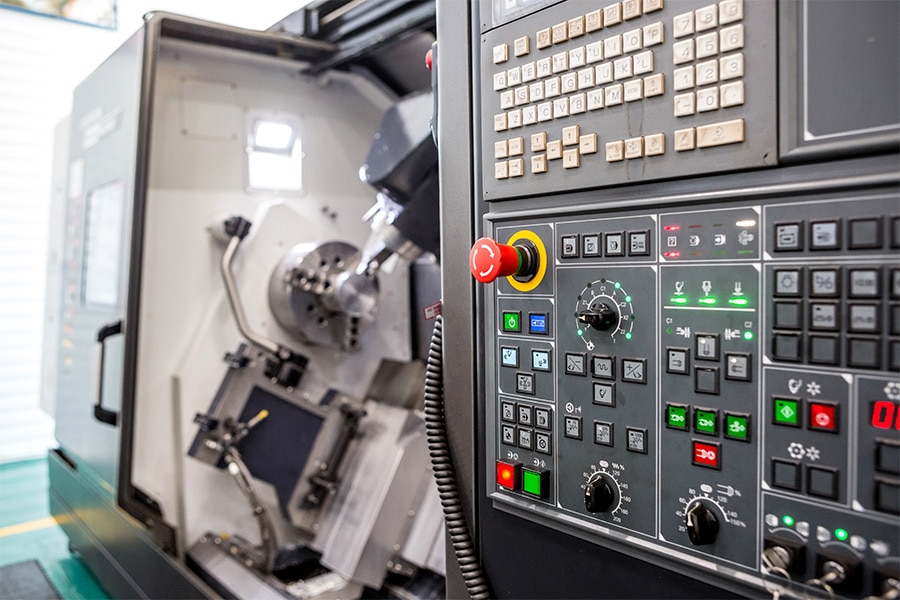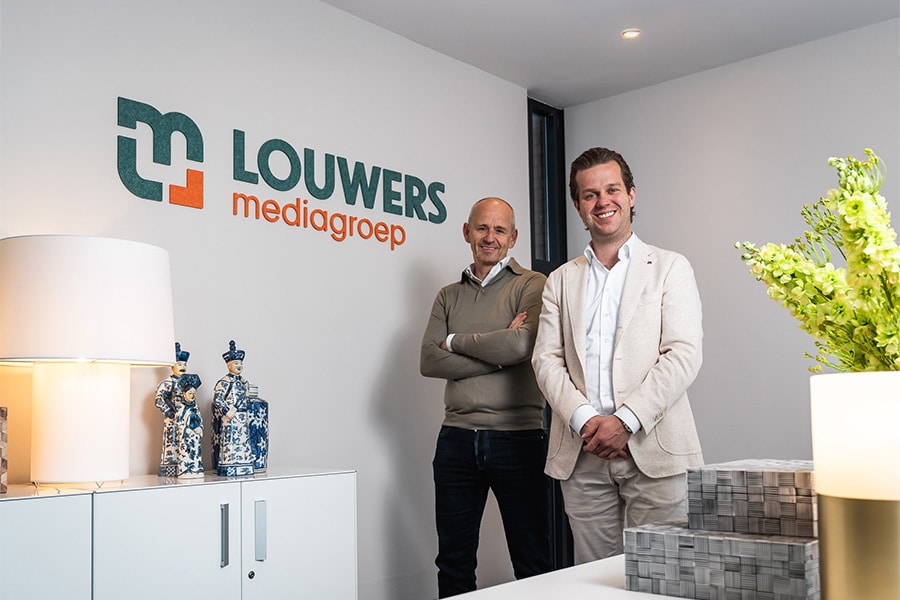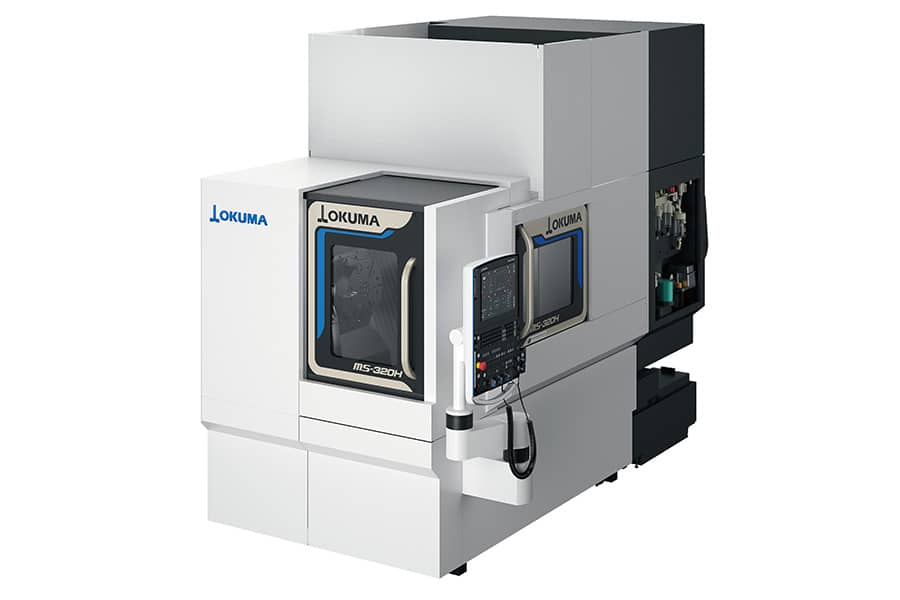
How to efficiently produce small batches?
Staff is becoming increasingly scarce and expensive. So what about automation? But is that profitable if no large series pass over my production floor? Mazak showed how it can be done. It took about thirty clients to two companies just over the border in the Netherlands that, by fully opting for automation, presented a particularly good growth curve. There was no lack of inspiration, Metaalvak also noted.

The trip took us to the Kempen region of Brabant. A region with a lot of natural beauty, certainly, but where it is also a struggle for personnel against the competition of high-tech companies such as ASML. Still, at Adra Metaalbewerking, the first stop on the tour, they know how to get things done. Since starting as a one-man company in turning and milling in 1994, the workforce has grown to 42 FTEs. The key to that success?
"Everyone is responsible for their own product. They set up the machines themselves, work the pieces on them, and see if any finishing is needed," says business manager Erik van Rooij. "We limit meetings to one hour a week. Through the ERP system and the screens in production, everyone has an overview of what needs to be finished when. It is up to them to make that happen. A matter of good agreements and trust."

15,000 different pieces per year
The result is a delivery reliability of 98%. In terms of quality, Adra Metalworking even scores 99%. Even though more than 15,000 different drawings pass through the workshop on an annual basis. "We can only realize our turnover of 9.5 million euros by also working a lot of unmanned hours. Automation is a must in our stile. Machines are the expensive ones not to run all day. The first job of everyone who arrives in the morning is to make sure the pieces are programmed that we want to finish the next night."

However, the series size for about 70% of the work is limited, from 1 to 10 pieces. Only 2% of the cases involve series above 100 pieces. "We make a success of it by having large tool magazines and good quality tools at the machines, and probes in the machine. If the dimensions are not perfect, the machine is automatically stopped or adjusted, so we don't have any rejects."

New automation solution every year
A story of automation that, by the way, began only five years ago. "Since then, an automation solution has been added every year. It gives you an extra employee without the burdens, with which you can also run production outside normal working hours. That in turn gives us more flexibility to plan everything smartly."
Adra Metalworking can choose from thirteen three-axis milling machines, five five-axis milling machines, five CNC lathes, four five-axis lathes and about eight conventional lathes to distribute the work on. So an extensive workshop, most of which is colored orange.
"You need reliable machines to automate. 24/7 production is a pipe dream. But they can very easily add an extra eight-hour shift every evening. That brings so much peace to the workshop and keeps the employees' enthusiasm and motivation up. But the most important thing, of course, is the better operating results and competitive advantage. You can build on that in turn to continue to grow."

Small series with high complexity
Whereas at Adra Metaalbewerking they mainly focus on smaller piecework, at Lacom Machinefabriek it's about somewhat larger, somewhat heavier material with longer cycle times. "Small series with high complexity for high-quality end customers and a proprietary product (truck-mounted cranes)," sums up general manager Driek Lammers. But for him, too, automation is the credo. "Hands off the products as much as possible. That way you produce cheaper, but also with fewer errors."
It hasn't hurt Lacom Machinefabriek. With 95 FTE and a machine park that includes some 40 machines for turning and milling, the Budel-based company realizes a turnover of 95 million euros. This is done from eight locations in the Netherlands. "By 2025 we want to double, by 2030 again. We do that by bringing everything in-house to work with increasing precision for increasingly heavy pieces."

Making more pivotal hours
A second common denominator with Adra Metalworking: in-house knowledge. "Our employees are themselves responsible for the pieces they make. Everyone receives internal training to continually increase their skills. We also choose to standardize as much as possible in terms of control. If a new product arises, I can put it down to anyone in production. This allows us to really distinguish ourselves."
In addition, extensive automation stands out, even in the largest pieces. For Lacom Machinefabriek, the go-ahead for automation was given by the need for more spindle hours. "Small or large pieces, single pieces or series: if you want to survive, you have to automate. But to do that, you need the right machines. Chip removal, for example, must be done very efficiently to ensure long tool life and the right quality. Matters on which Mazak has also placed enormous emphasis."

The death knell? No, the reverse
When Lammers bought sense first Integrex, he was warned by another business leader that such an investment would kill him. It turned out to be the opposite. "That other company has since disappeared, and we are now pulling that card even more here. Everything that is not yet Mazak will become Mazak in the future. Because it's all about spindle hours."
Yet much more investment was involved. With Dutch swagger, Lammers completely prepared his company for the future during the corona crisis. "We made mold plates, installed zero-point tensioning systems ... everything we need to run completely unmanned. When I see what we can do today and look back at how we used to do it ... how much we fumbled. We started very carefully with automation, but built and expanded it step by step." A path on which Lacom Machinefabriek intends to go even further. It is currently looking at what added value a cobot can bring to the production floor. "The more you automate, the greater the efficiency gains you can make," Lammers concludes.
Satisfied
The last word went to a particularly satisfied Hugo Verlaak, sales manager for Mazak, at the end of the afternoon. "There was a particularly high level of interest in this event. Everyone wants a peek into someone else's internal kitchen. It is then also easier to learn from the experiences of other users who faced the same challenges as you. That's what we wanted to achieve with this. The large series work is gone from our areas. But we help our customers to efficiently automate even smaller numbers, even the most complex pieces. Adra and Lacom are showing how it can be done."
(R)Evolution in programming
These examples undoubtedly inspire you to work on automation with your own machinery as well. But then, don't I just shift my bottleneck, you ask yourself? How do I get everything programmed to run those extra shifts?
In this area, too, Mazak is putting itself on the map as an innovator. As the only machine manufacturer, it currently offers Smooth CAM AI software to automate even programming on Integrex machines. Without post-processor, without expensive licenses and simulation software. Everything integrated in the controller or in the Smooth Cam Ai package. In five simple steps a program is generated based on the step file, so your products come out of the machine in record time.
"Waterproof, no, we are not that far yet. But 80% of the work can already be done with this, saving quite a bit of time and resources anyway. By the way, at the upcoming EMO we will again explain new features, because it is clear that this is the future."
Another interesting new feature that works along the same lines is Quick Quote. "This gives you a quick insight into the cycle time and the cost price, so that pre- or post-calculation becomes child's play. Because you also immediately generate the machining program with it," says Yves Wienen, applications engineer at Mazak.

Heeft u vragen over dit artikel, project of product?
Neem dan rechtstreeks contact op met Yamazaki Mazak Europe N.V..
 Contact opnemen
Contact opnemen



